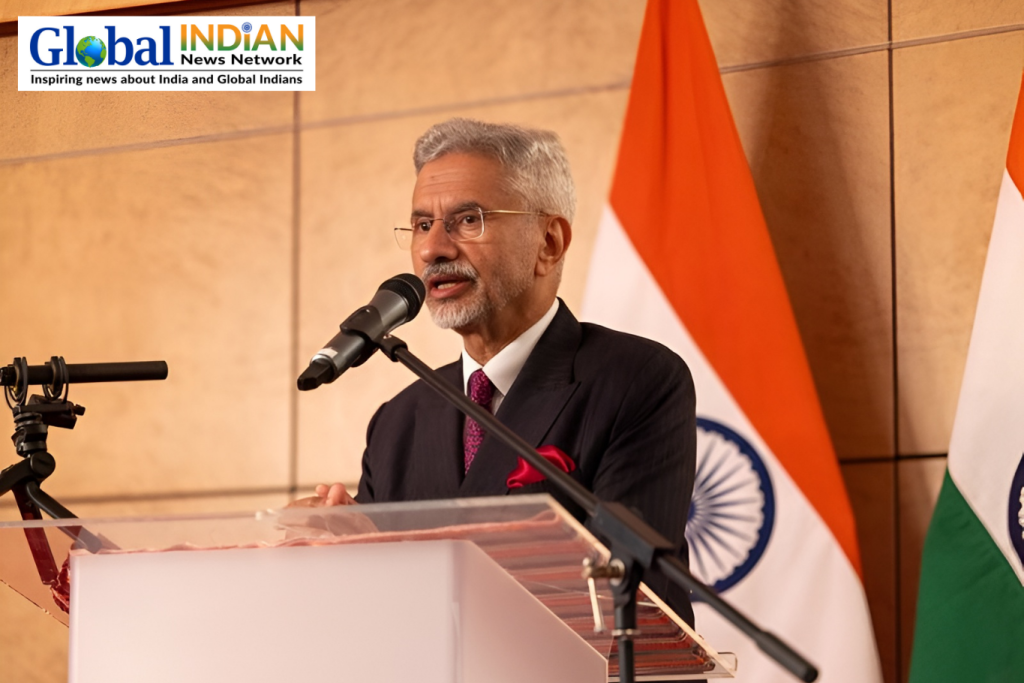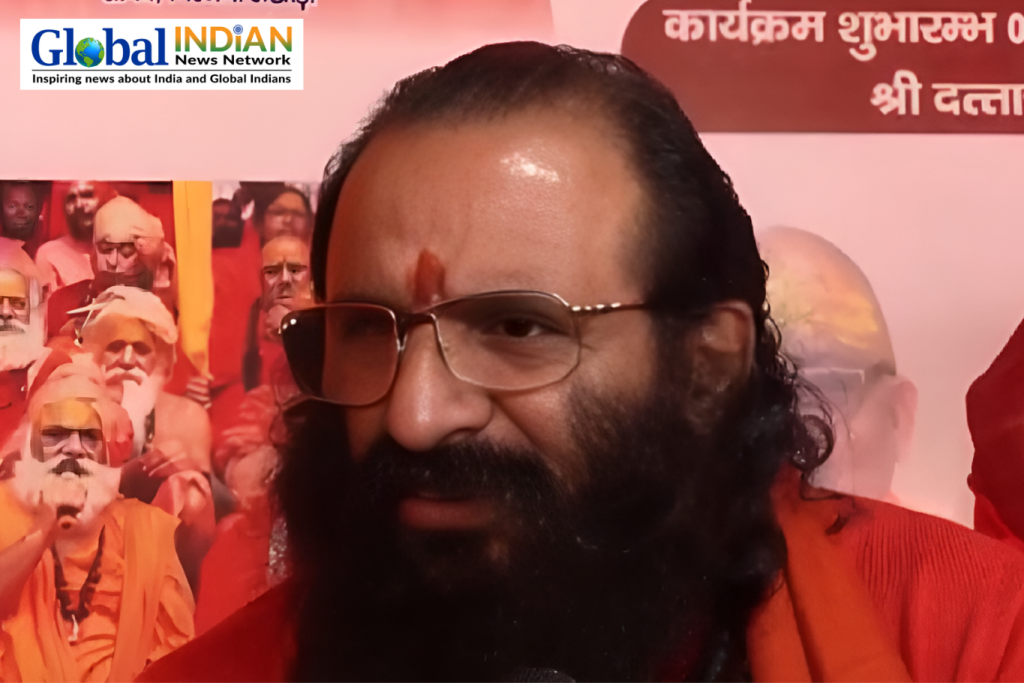
Dr. Richard Kay – New Zealand Ambassador to UAE is traditionally welcomed by flags and flowers
Photo Courtesy : BAPS Mandir
Ambassadors from over 30 nations gathered at the extensive construction site of the BAPS Hindu Mandir in Abu Dhabi, demonstrating unity and respect. The purpose of their visit was to enhance intercultural understanding and allow them to witness the progress of the region’s first traditional Hindu temple. This temple symbolizes universal values such as tolerance and harmony.
The distinguished guests, including ambassadors from Afghanistan, Bangladesh, Belgium, Brazil, Canada, Cyprus, Denmark, Estonia, Germany, Indonesia, Israel, Japan, Latvia, Lithuania, Maldives, Nepal, New Zealand, Nigeria, Norway, Oman, Philippines, Romania, Serbia, Sri Lanka, Syria, Thailand, Ukraine, and other countries, were warmly received by dedicated directors and volunteers overseeing the temple’s construction. Traditional customs, such as adorning the ambassadors with garlands and tying sacred threads, were followed to welcome them.
During their visit, the ambassadors received a comprehensive overview of the temple’s historical significance, construction process, and expected impact through captivating video presentations and personal experiences. His Excellency Sunjay Sudhir, the Indian ambassador to the UAE, emphasized the longstanding friendship between India and the UAE, praising the tolerance and generosity of the UAE leadership. He acknowledged that the temple represents the aspirations of the Indian community in the UAE and the selfless efforts of BAPS saints and volunteers.
In a video message, India’s Minister of External Affairs, Dr. S. Jaishankar, expressed his hopes for the temple’s significance for the UAE and the world. He also conveyed his deep respect for the vision and direction of the UAE leadership. Swami Brahmaviharidas, in his address, welcomed the ambassadors and highlighted the temple’s role in celebrating the past, addressing the present, and shaping the future. He expressed gratitude to the UAE and Indian leadership for their support of pluralism and harmony.
After the initial briefing, the ambassadors embarked on a guided tour of the temple, participating in a symbolic act of sprinkling flowers on the temple’s bricks. They marveled at the intricate carvings and delicate designs that showcased the timeless values of India and ancient civilizations. The guests were surprised to discover that the temple’s façade immortalized cultural tales from Arabian, Mayan, Greek, and other traditions that promote peace, tolerance, and harmony. Skilled craftsmen from India meticulously created these artworks without steel reinforcements, ensuring their longevity.
The ambassadors’ visit left a profound impact, with Ambassador Richard Kay of New Zealand describing the temple as a cultural asset that would enhance the UAE’s skyline. Similarly, Ambassador Akio Isomata of Japan expressed admiration for Indian craftsmanship and recognized the philosophy of tolerance reflected in the carvings. Ambassador Aminath Shabeena of the Maldives urged others to visit and appreciate the detailed carvings and the heartfelt emotions of the volunteers. Ambassador Amir Hayek of Israel believed that the temple, constructed in a tolerant country, would contribute to harmony in the region and beyond.
As a gesture of remembrance, the ambassadors were presented with exquisitely crafted miniature models of the temple. The visit of the ambassadors played a crucial role in promoting peace, fostering cultural interaction, and strengthening diplomatic ties between the participating countries and the United Arab Emirates.










